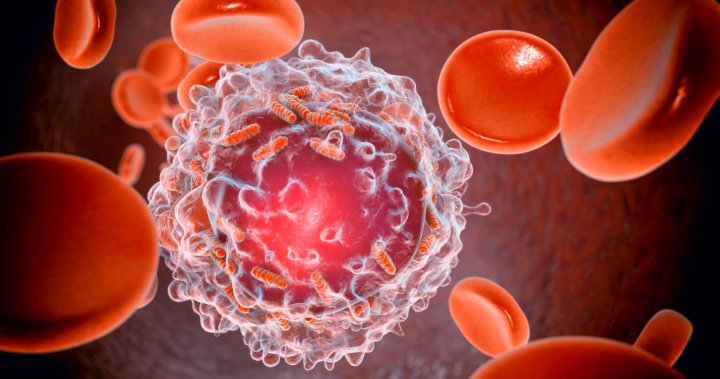With almost 600,000 Canadian children dealing with food allergies, some caregivers and their kids face a feeling of constant worry.
Rebecca Cooper from St. Thomas, Ont., is one such caregiver. Her 13-year-old son Bergen Eckert is allergic to peanuts, sesame, chickpeas, as well as most other nuts except for almonds.
Though it’s all he’s known, Cooper says she’s constantly worried when he goes into a “new food environment.”
“Things like birthday parties or sleepovers, they just stress me out a lot more with him,” she told Global News.
Prior to the COVID-19 pandemic, Eckert began a therapy called oral immunotherapy (OIT), which for decades has seen food allergens introduced in very small amounts and then gradually increasing doses until they can eat a certain amount without reaction.
Though they could not continue due to the pandemic and her concerns of safety at hospitals, Cooper said her son was able to tolerate the therapy to a certain extent.
“I do know that there’s lots the parents who would (consider OIT) and … I understand that because I was a parent who wanted to do that at one point,” Cooper said.
“I think that there are a lot of guidelines that could be very helpful.”
Dr. Douglas Mack, a McMaster University professor in the Department of Pediatrics, alongside several other researchers from around the globe have released new guidelines in the hopes of helping improve OIT.
The latest health and medical news
emailed to you every Sunday.
Among the recommendations is providing a “robust” standardized education process to help clinicians better prepare caregivers and patients for OIT, ensuring adequate parental supervision for the therapy, and identifying risk factors that could prevent use of OIT.
“We know that if we prepare these families adequately, it can be safer, more effective, more successful and have a much, much smoother course,” he said. “The families feel empowered, and I think overall have a better outcome.”
According to the study, the guidelines provide recommendations for clinicians to implement but there is no mandatory requirement from any governing body they be used.
Food Allergy Canada executive director Jennifer Gerdts, who is also the mother of two adult men with allergies, said OIT has shown success, even among those who stopped after the treatment no longer worked.
“There’s some liberation in the quality of life, and reduction [in] anxiety,” she told Global News.
She said the new guidelines for OIT could improve how it’s administered among patients, adding patients would gain a better understanding of the treatment and potential risks associated with it.
OIT has been conducted both in clinics and at hospitals, but is also taking place at home under guidance from an allergist. However, some parents may have received no formal training or informed consent process on the therapy.
“They’re basically amateur medical professionals without any significant training,” Mack told Global News.
“It’s no use if the families fall apart on us and the therapy stop. It does not help the children and it does not in the long term help the in the entire scenario.”
According to the American Academy of Allergy Asthma and Immunology, OIT used for allergens like peanuts, egg and milk have shown to desensitize approximately 60 to 80 per cent of patients studied. However, it notes it’s not yet “definitively known” if desensitization can protect patients from real-world accidental exposures.
Gerdts said one of the big barriers to accessing OIT is cost, noting some people may have to pay. She argued policymakers need to take more action to ensure treatment for allergies is more widely available.
“This is a treatable, chronic disease, but the big elephant in the room is about access,” she said. “These things are all good and well. But if you can’t access it, it’s not going to make enough impact for the community.”
The guidelines can also help in determining if OIT will be successful by identifying risk factors, such as uncontrolled asthma or food aversion, which could prompt the end of therapy. As well, recurring severe reactions requiring epinephrine could also result in stopping the treatment, according to Mack.
“Those are just some of the reasons why we would say, listen, it’s time for us to really seriously consider if this is in the best interest of your child, and if maybe simply avoiding the food may actually be better for you,” he said.
Mack added he recognizes the burden of asking caregivers to monitor children during OIT, but the hope is that by properly preparing parents and patients for the daily therapy, it could lead to better success.
© 2024 Global News, a division of Corus Entertainment Inc.




